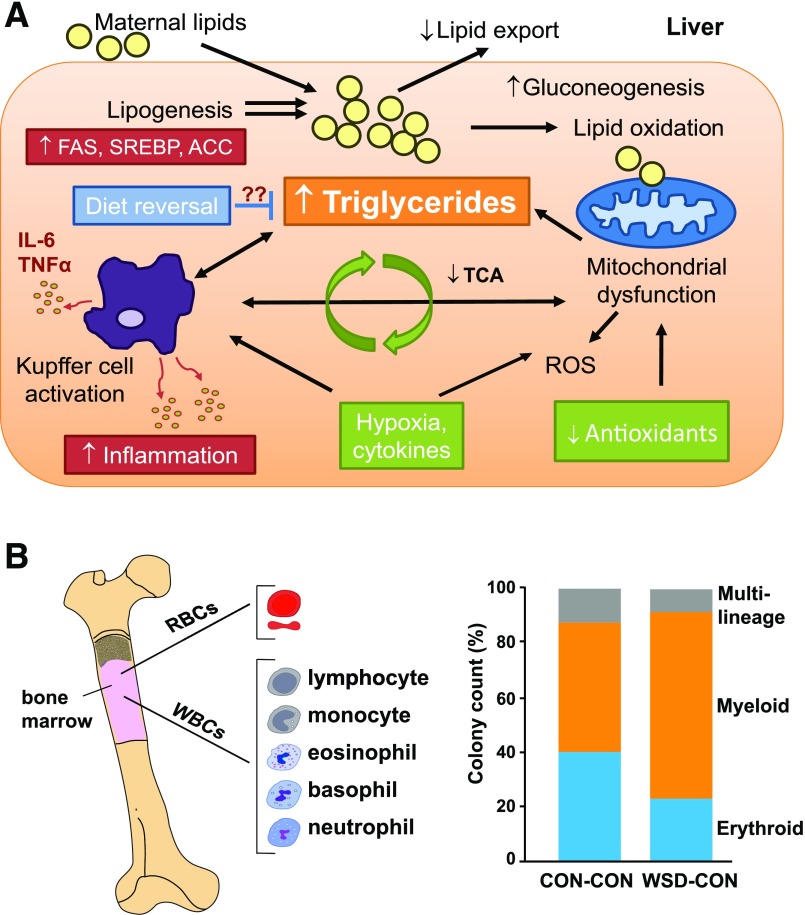Figure 1.
Programmed effects in the liver and bone marrow immune cells of NHP offspring exposed to maternal WSD. A: Livers from fetal offspring (early third trimester) of obese, WSD-fed NHP dams demonstrate increases in gluconeogenic genes, oxidative stress, and triglyceride accumulation. Diet reversal in obese mothers produces fetuses with lower lipogenic gene expression and normalized oxidative stress yet persistently higher triglycerides, demonstrating incomplete amelioration of the steatotic phenotype. Global metabolomic profiling of fetal liver and serum revealed decreased tricarboxylic acid (TCA) cycle intermediates, increased amino acid metabolism, and increased gluconeogenesis, indicating increased reliance on amino acid metabolism to meet energy needs in fetuses from obese, WSD-fed mothers. These fetuses have lower arterial oxygenation suggestive of mild hypoxia and exposure to higher plasma cytokine levels (shown in green). Incomplete mitochondrial and lipid oxidation and/or respiratory chain dysfunction, when combined with limited antioxidant activity, increases hepatic oxidative stress and liver injury prior to the development of obesity. Juvenile offspring from WSD-fed dams show innate immune (Kupffer cell) activation and inflammatory cytokine expression (interleukin-6 [IL-6], tumor necrosis factor-α [TNFα]) and a persistent increase in lipogenic gene expression (fatty acid synthase [FAS], sterol regulatory element binding protein [SREBP], acetyl-CoA carboxylase [ACC]) in vivo and in vitro (shown in red), even after weaning to a chow diet. B: Maternal WSD persistently alters bone marrow immune cell proportions in NHP offspring. Bone marrow from 3-year-old juvenile offspring exposed to maternal WSD, then shifted to a chow diet (CON) at weaning, was studied using colony-forming assays of plated bone marrow cells. A significant 34.5% (P < 0.05) relative increase in myeloid cell proliferation was observed at the expense of erythroid (−78.9%) and multilineage (−53.8%) progenitor cell types. RBCs, red blood cells; ROS, reactive oxygen species; WBCs, white blood cells.

